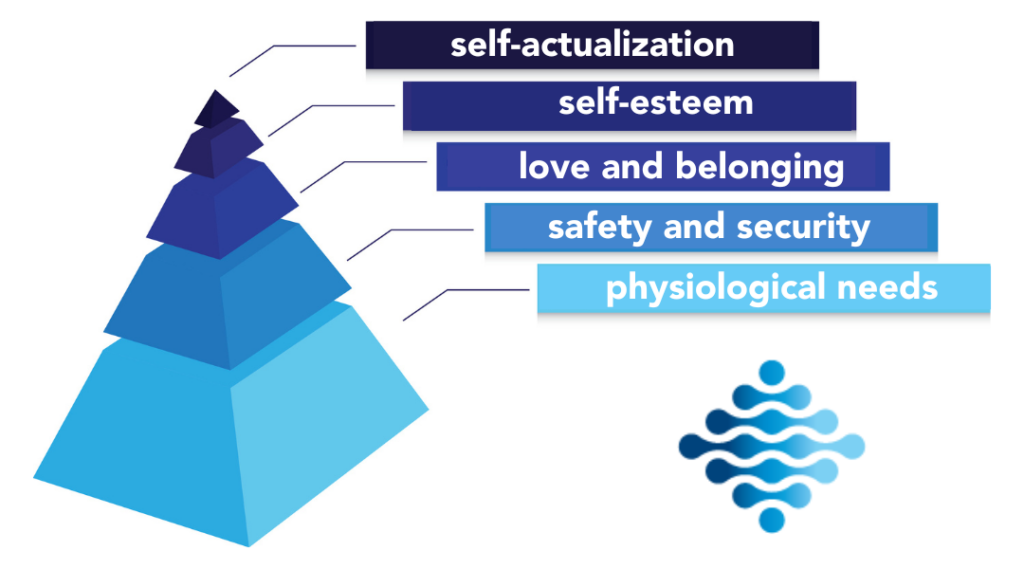“Two men look out through the same bars; One sees the mud, and one the stars.” (Frederick Langridge, 1896)
As I drop in on conversations at professional gatherings and social events, I am struck by the dark view many people have of the world. They fret about political turmoil, wars, climate disasters, economic shocks, health hazards, technological disruptions, celebrity disputes, and the ever-increasing pace of change.
These problems have always existed. Search the archives of any news outlet from any year in the past, and you’ll discover a similar number of upheavals. What distinguishes our society today is just how anxious people are about them.
 My unscientific observations align with the available data. Two British psychologists conducted data mining on the lyrics of over 150,000 popular songs released between 1965 and 2015. They discovered that words with a positive emotional valence, such as “love,” “happy,” and “joy,” had slowly but steadily decreased.
My unscientific observations align with the available data. Two British psychologists conducted data mining on the lyrics of over 150,000 popular songs released between 1965 and 2015. They discovered that words with a positive emotional valence, such as “love,” “happy,” and “joy,” had slowly but steadily decreased.
On the other hand, words with a negative emotional valence, such as “pain,” “hate,” and “sorrow,” had slowly yet surely been rising. The word “hate” didn’t even appear in the earlier years. After the turn of the century, it skyrocketed (Acerbi & Brand, 2022).
Analysis of news headlines also shows a similar trend. Researchers analyzed data from 23 million stories published between 2000 and 2019 and looked for occurrences of Paul Ekman’s six basic emotions (anger, disgust, fear, joy, sadness, surprise). They also added a seventh category of “neutral” words.
They found a steady increase in headlines expressing negative sentiments like anger, disgust, fear, and sadness, along with a decrease in “neutral” emotions. The effect appeared in publications that leaned to the political left. But in media outlets that leaned to the right, it was even more pronounced (see chart below from Rozado, Hughes & Halberstadt, 2022).
The General Social Survey, conducted by the National Opinion Research Center, monitors ongoing trends in opinions and attitudes of people in the US (NORC.org). It reveals that between 2000 and 2018, the percentage of people who classified themselves at the bottom rung of the happiness scale more than doubled.
This trend toward a declining experience of happiness is not limited to the world’s wealthiest countries. A Gallup survey of people in 140 countries identified a similar trend. It asked people to rate their lives from 0 to 10, with 10 representing the best possible life and 0 the worst.
Only 1.6% of people worldwide rated themselves at 0 at the turn of the century. Today that number has risen fourfold. Misery has increased notably in big countries like India, China, Brazil and Mexico. In India, the percentage of people rating themselves at 0 has risen to 21% of the entire adult population (Ray, 2022).
 People were particularly unhappy about their work lives. Gallup found that only 20% are thriving at work, with 62% indifferent and 18% absolutely hating their jobs.
People were particularly unhappy about their work lives. Gallup found that only 20% are thriving at work, with 62% indifferent and 18% absolutely hating their jobs.
However, the Gallup poll also reveals that while the bottom 20% of global citizens are experiencing their lowest-ever levels of happiness and well-being, the top 20% are experiencing the highest-ever levels.
In my recent research, I examine states of “flow” and self-transcendence. This refers to the ability to elevate one’s consciousness beyond obsession with the problems of daily life and merge with an identity larger than oneself. I’m particularly interested in people who have jumped past the top of Abraham Maslow’s hierarchy of needs. In Maslow’s famous diagram, the top of his pyramid is called “self-actualization.”
In the final two years of his life, Maslow discovered extraordinary states of being that went far beyond self-actualization. He called this state “self-transcendence,” and it leads to states of bliss and well-being that ordinary consciousness cannot fathom.
This state of being is independent of socioeconomic status. Even Tibetan monks, who own nothing, not even the clothes on their backs, have been the subject of MRI research that finds them to be extraordinarily happy. Studies of individuals who have awakened to self-transcendent states find them at all levels of financial wellbeing and physical health (Martin, 2019). Once awakened, they tend to remain in that state, undeterred by the ups and downs of life.
In my own research, I have been privileged to interact with many individuals who have made awakening their top priority. I’ve been taking small groups of people through a new program called “The Short Path to Oneness.” I call them “The Awakeners.” These individuals, living in the same world as those who are unhappy, tend to experience extraordinary happiness amidst the same economic, climate, family, and work realities as everyone else.
 The Awakeners possess a sense of connection with something greater than themselves, which manifests as an unshakable sense of well-being. They often meditate, spend time in nature, connect with close friends on a soul level, choose meaningful work, direct their attention towards the good, and maintain a rock-solid sense that things are fundamentally okay. This sense of well-being, which underlies every part of one’s personal existence, is what Jeffrey Martin, a dear friend of mine and great researcher, calls “fundamental well-being.”
The Awakeners possess a sense of connection with something greater than themselves, which manifests as an unshakable sense of well-being. They often meditate, spend time in nature, connect with close friends on a soul level, choose meaningful work, direct their attention towards the good, and maintain a rock-solid sense that things are fundamentally okay. This sense of well-being, which underlies every part of one’s personal existence, is what Jeffrey Martin, a dear friend of mine and great researcher, calls “fundamental well-being.”
Our world civilization seems to be going through a bifurcation of consciousness. Those who are suffering are unhappier than ever before, perceiving the world as worse than it has ever been, despite crises having always been present. The Awakeners, however, living in exactly the same world, have an opposite experience. An unshakable sense of well-being is fundamental to their lives and their assumptions about the world.
The National Center for Health Statistics measures the use of meditation in the US. They find that the number of meditators quadrupled between 1980 and the first decade of the twenty-first century, rising to 4% of the population by 2012.
It then increased exponentially, reaching 14.2% in 2017 (CDC, 2018). Following this trajectory, that number is now even larger. The Pew Center found that 40% of Americans report meditating at least once a week (Masci & Hackett, 2018).
The trend of individuals turning to meditation is a positive indication of the growing number of Awakeners. Despite the fact that many people are suffering more than ever before, and perceiving the world through the lens of negative emotion, the number of Awakeners is increasing. Viewed objectively, the two groups live in the same world. Viewed subjectively, their experiences are diametrically divergent.
This paradox highlights the power of consciousness. Every human being has 86,400 seconds in each day and can focus their awareness in any direction they choose.
It is certainly essential that we, as individuals and as a species, must take action on real-world issues such as social inequality, wealth disparity, climate change, racial bias, interpersonal violence, social media intrusion, government corruption, gender inequality, human rights, and corporate greed.
At the same time, it is equally valid that we live in a world that invites us to experience serenity, beauty, awe, and grace every day. Both realities coexist and do not negate each other. We can awaken. We can choose to live live self-transcendent lives in the midst of all the upheaval and chaos that is always present in the world.
References
Acerbi, A., & Brand, C. (2022). Why are pop songs getting sadder than they used to be?. Retrieved 10/31/2022 from https://aeon.co/ideas/why-are-pop-songs-getting-sadder-than-they-used-to-be
CDC (2018). Use of Yoga and Meditation Becoming More Popular in U.S. Retrieved 10/31/2022 from https://www.cdc.gov/nchs/pressroom/nchs_press_releases/2018/201811_Yoga_Meditation.htm
Masci, D. & Hackett, C. (2018). Meditation is common across many religious groups in the U.S. Pew. Retrieved 10/31/2022 from https://www.pewresearch.org/fact-tank/2018/01/02/meditation-is-common-across-many-religious-groups-in-the-u-s/
Ray, J. (2022). Who are the unhappiest people in the world? Retrieved 10/31/2022 from https://news.gallup.com/opinion/gallup/400667/unhappiest-people-world.aspx
Rozado, D., Hughes, R., & Halberstadt, J. (2022). Longitudinal analysis of sentiment and emotion in news media headlines using automated labelling with Transformer language models. Plos One, 17(10), e0276367.




